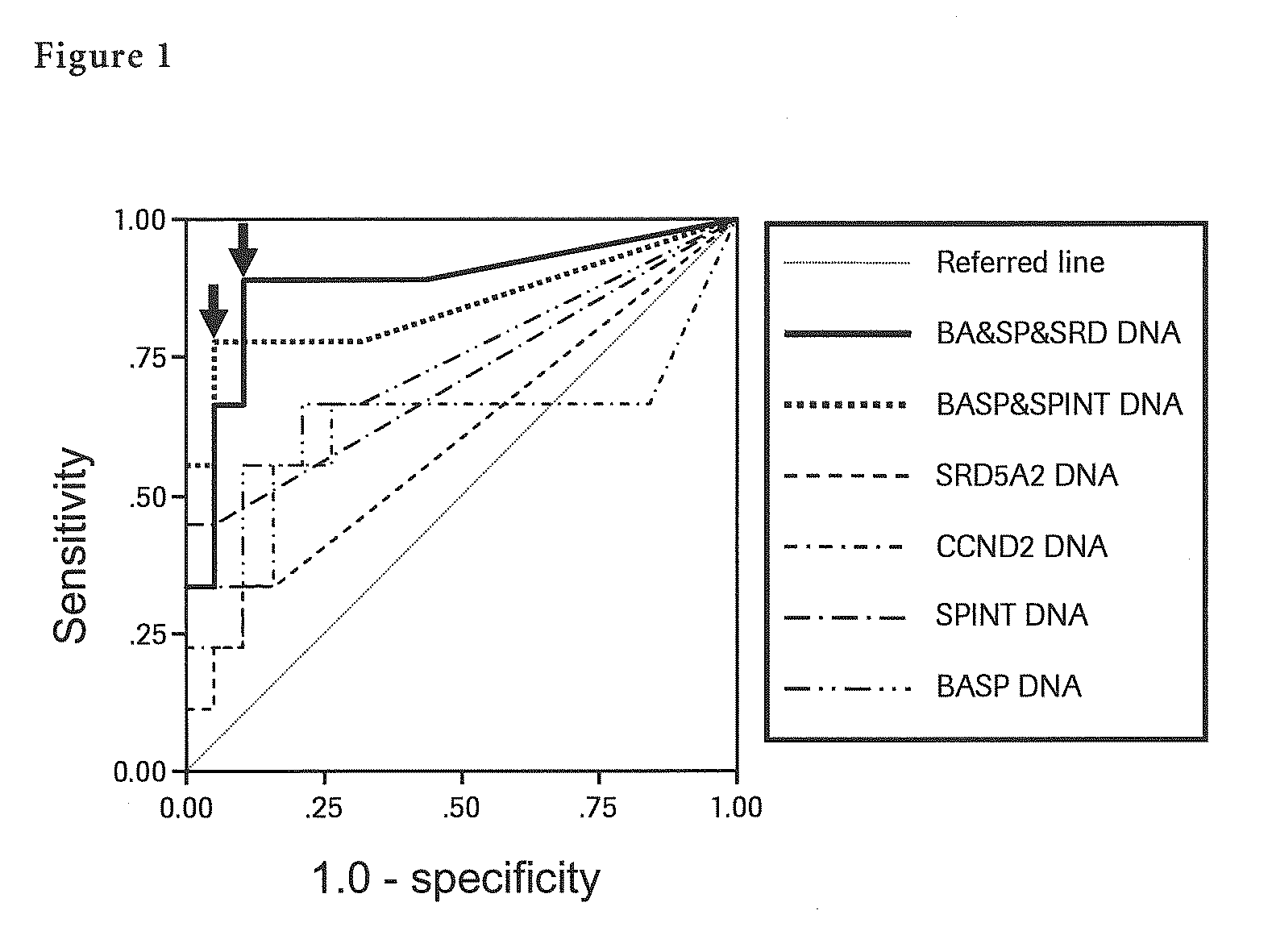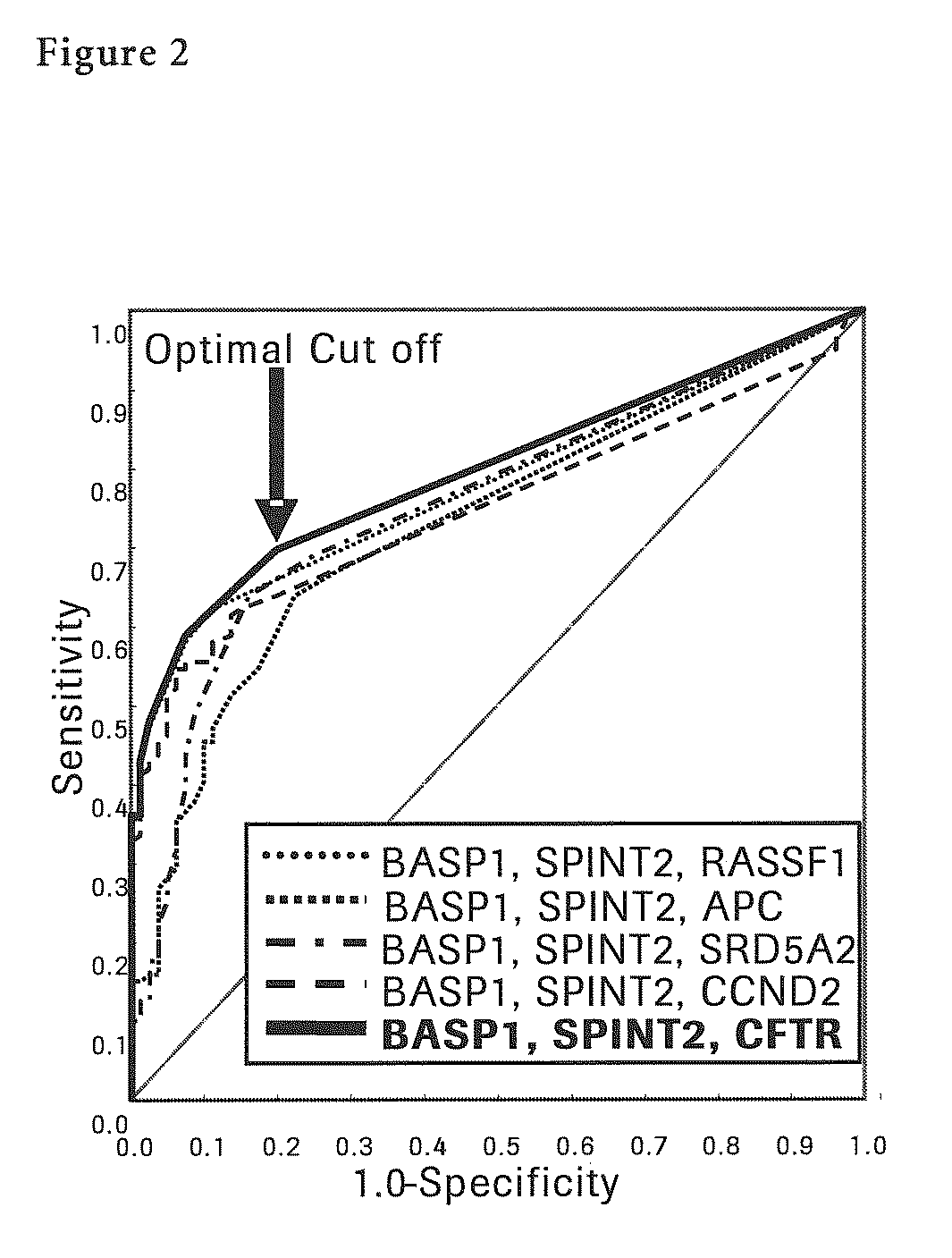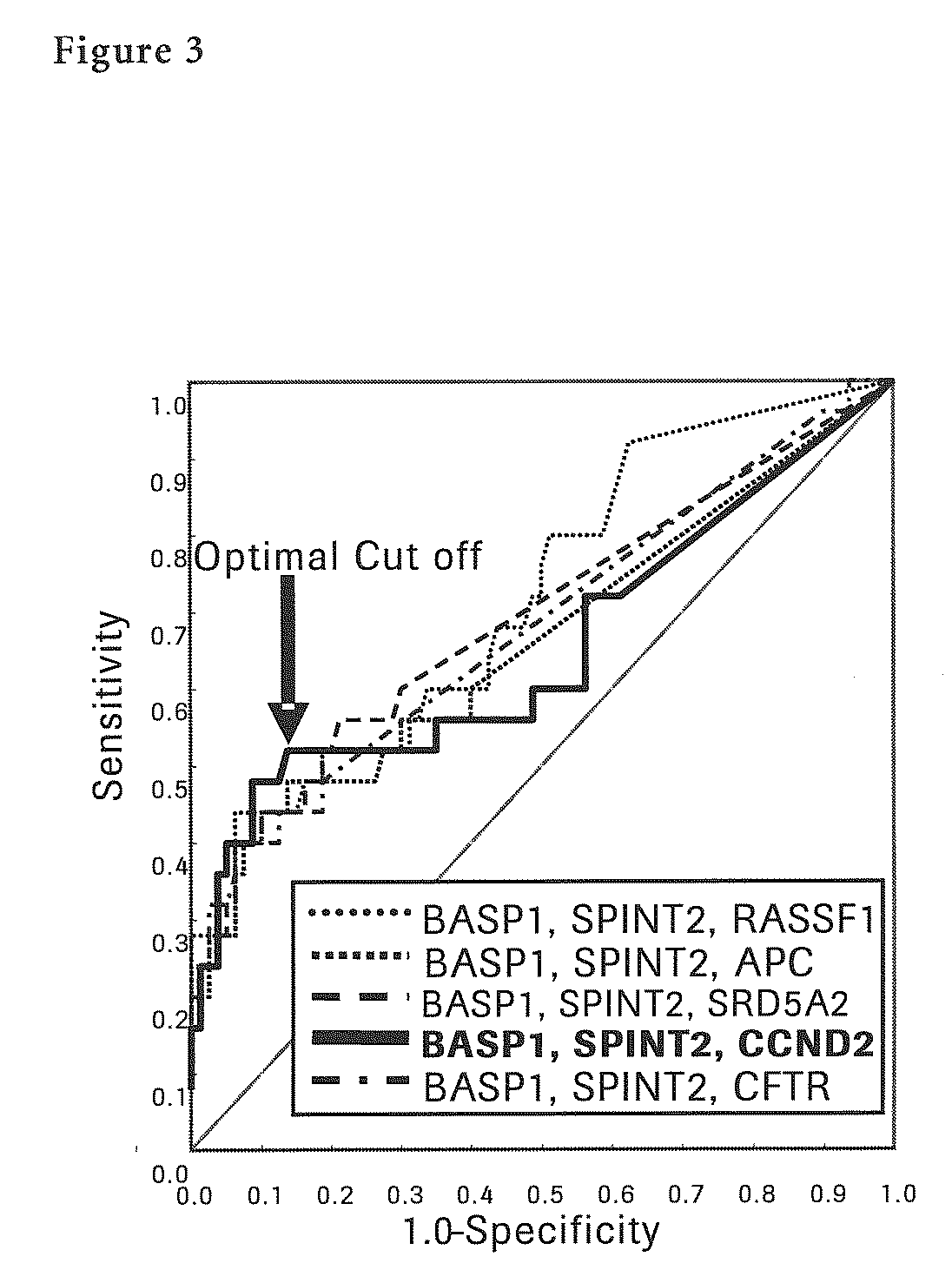Liver Cancer Methods and Compositions
a liver cancer and method technology, applied in the field of liver cancer methods and compositions, can solve the problems of insufficient sensitivity and specificity of existing tumor markers, afp and pivka-ii, which are employed for immunological assays, etc., and achieves simple, accurate and high-throughput results. , the effect of easy automation
- Summary
- Abstract
- Description
- Claims
- Application Information
AI Technical Summary
Benefits of technology
Problems solved by technology
Method used
Image
Examples
example 1
Identification of Liver Cancer Specific Methylation Genes
[0117]Using “Affymetrix Human Genome U95A DNA Chips®”, we selected one hundred and one genes whose expression level specifically and significantly reduced twice and over in tumor tissues, namely whose CpG islands would be most likely to be highly methylated, by comparing gene expression levels between seventy-six cases of tumor tissues and sixteen cases of non-tumor tissues which were excised from liver cancer patients by surgery. Furthermore, twenty-three liver cancer specific methylation gene candidates which actually have CpG islands in their promoter regions were selected from said genes.
[0118]Next, each 1 1 μg of tumor tissue genomic DNA which obtained from twenty cases of liver cancer patients in early stage (liver cancer whose stage classification is stage I or II, and tumor size is below 1.3 to 3.6 cm) was BIS-treated, the regions including CpG islands on the above twenty-three candidate genes using said BIS-treated DN...
example 2
Performance Evaluation of Liver Cancer Specific Methylation Genes with a Small Number of Cases
[0122]The total DNA was extracted from 1 ml of serum collected from nine cases of HCV-positive liver cancer in early stage (well-differentiated liver cancer) and nineteen cases of HCV-positive high risk patients of liver cancer (chronic hepatitis and liver cirrhosis) using the DNA Extractor SP Kit for Serum and Plasma (Wako Pure Chemical Industries, Ltd.) and 50 μl of DNA solution was prepared.
[0123]Said DNA solution was BIS-treated using a self-prepared reagent and 50 μl of BIS-treated DNA solution was prepared. Next, each methylation specific PCR (MSP) for seven liver cancer specific methylation genes (BASP1 gene, SPINT2 gene, APC gene, CCND2 gene, CFTR gene, RASSF1 gene and SRD5A2 gene) was performed with 5 μl of said BIS-treated DNA solution. In said MSP, by adding TaqMan probe specific to each gene together, quantification of methylated DNA by real-time PCR was carried out. Quantificat...
example 3
Performance Evaluation of Liver Cancer Specific Methylation Genes with a Large Number of Cases
[0132]The total DNA was extracted from 1 ml of serum collected from one hundred and nineteen cases of HCV-positive liver cancer patients (including twenty-five cases of liver cancer in early stage whose stage classification is stage I (stage based on The General
[0133]Rules for the Clinical and Pathologic Study of Primary Liver Cancer, see nonpatent literature 15) and tumor size is below 3 cm, and twenty-one cases of liver cancer in early stage that is well-differentiated) and eighty cases of HCV-positive high risk patients of liver cancer (chronic hepatitis and liver cirrhosis) using the DNA Extractor SP Kit for Serum and Plasma (Wako Pure Chemical Industries, Ltd.) and 50 μl of DNA solution was prepared. Said DNA solution was BIS-treated using a self-prepared reagent and 50 μl of BIS-treated DNA solution was prepared.
[0134]Next, each methylation specific PCR (MSP) for seven liver cancer sp...
PUM
| Property | Measurement | Unit |
|---|---|---|
| Concentration | aaaaa | aaaaa |
Abstract
Description
Claims
Application Information
 Login to View More
Login to View More - R&D
- Intellectual Property
- Life Sciences
- Materials
- Tech Scout
- Unparalleled Data Quality
- Higher Quality Content
- 60% Fewer Hallucinations
Browse by: Latest US Patents, China's latest patents, Technical Efficacy Thesaurus, Application Domain, Technology Topic, Popular Technical Reports.
© 2025 PatSnap. All rights reserved.Legal|Privacy policy|Modern Slavery Act Transparency Statement|Sitemap|About US| Contact US: help@patsnap.com



